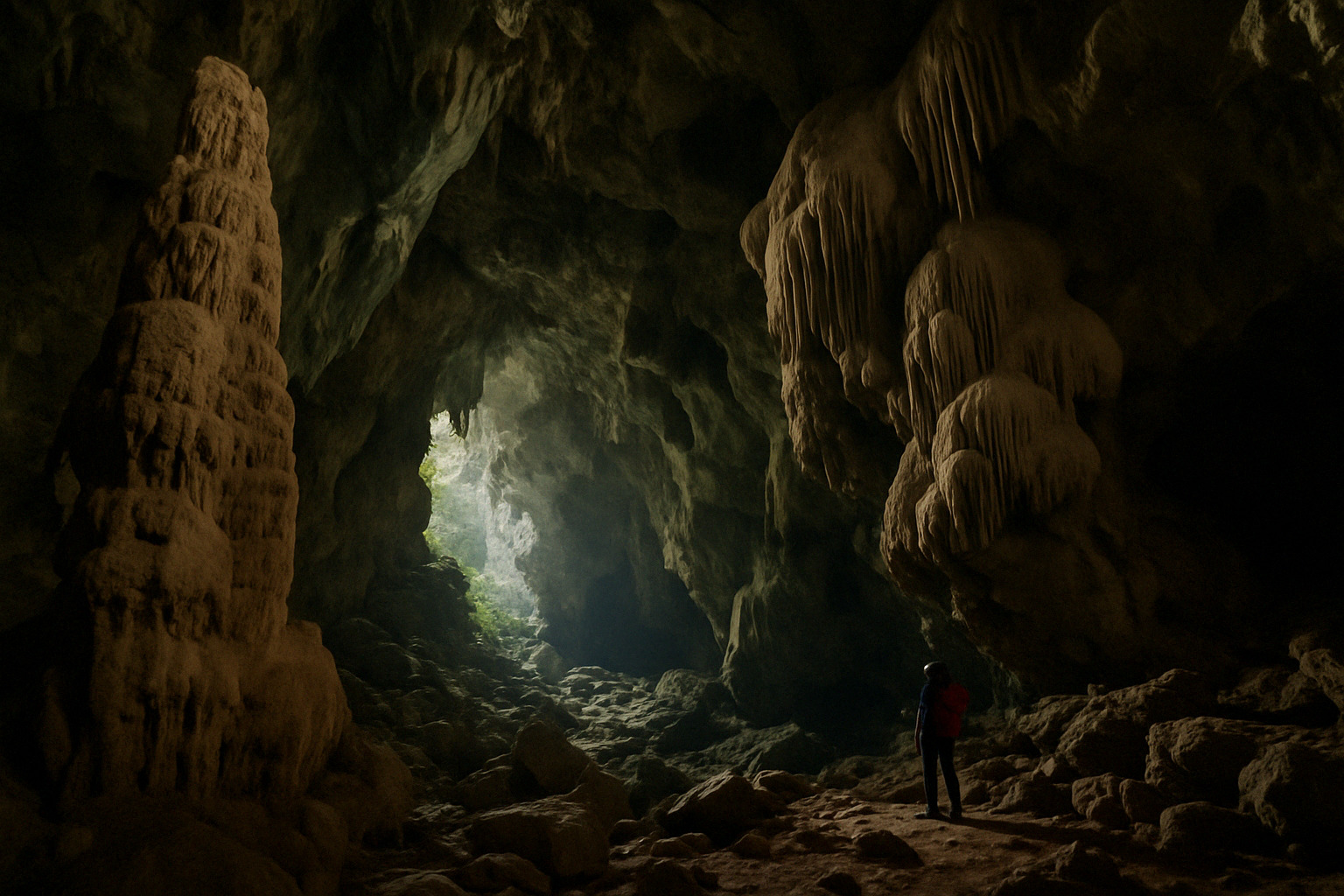Lake Kenyir isn’t just Malaysia’s largest man-made lake—it’s a gateway to an underground network of caves that remain wrapped in silence and shadows. These caves aren’t marked with neon signs or crowded tour groups. They’re hidden behind lush foliage, beneath limestone ridges, and within the folds of centuries-old geological formations. For those seeking something raw and untouched, the caves of Kenyir deliver more than silence—they offer echoes from deep time.
Why the Caves of Kenyir Matter
The caves are more than hollowed rocks. They’ve witnessed prehistoric life, weathered shifting earth, and stored secrets in their walls. Local legends speak of spirits and hidden treasures, while scientists value them for rare formations and fragile ecosystems.
They are largely off-grid. Some remain uncharted, their paths marked only by faint trails and the sound of rushing water. That alone makes them worth paying attention to.
Notable Caves Around Lake Kenyir
1. Bewah Cave
- History: Archaeologists uncovered Neolithic skeletons here. One of the oldest human remains in Malaysia was found inside—carbon-dated at over 8,000 years.
- Features: A wide chamber with towering stalactites. Artificial lighting has been installed in parts, but much of its interior still carries a natural darkness.
- Access: Requires a boat ride and short hike. Guided visits are encouraged due to its archaeological significance.
2. Taat Cave
- Legend: Known locally as a spiritual site. Some believe spirits still dwell in its recesses.
- Geography: Layers of limestone form chambers, crawl spaces, and narrow passageways. Bats often fill the ceiling, and the cave floor can be slippery during the rainy season.
- Best For: Adventurers who enjoy low-light trekking and tight spaces.
3. Gua Kris
- Structure: A more vertical cave that challenges climbers with steep drops and narrow ledges.
- Why Visit: Features underground waterfalls and rock formations shaped like blades—hence the name “Kris.”
- Tip: Bring a rope, a headlamp, and a guide who knows the routes.
What You’ll See Inside
- Limestone formations sculpted by thousands of years of mineral deposits.
- Rare insects and bats, including species not found outside these ecosystems.
- Echo chambers where even a whisper can seem thunderous.
- Remnants of ancient tools, in some areas under conservation.
Essential Tips Before You Enter
- Hire a local guide. Many caves have tight passages and unmarked trails. Navigation without experience can lead to serious risk.
- Gear up. Sturdy boots, gloves, and helmets are non-negotiable.
- Respect the cave. These spaces are fragile. Touching formations or leaving trash can ruin ecosystems that took millennia to form.
What Makes Kenyir’s Caves Different
- Most caves in Southeast Asia are part of well-known networks. Kenyir’s are still being studied.
- The low foot traffic preserves their atmosphere—damp, quiet, and wild.
- Legends are tied to nearly every location. Locals speak of haunted hollows, cursed gold, and cave spirits with unfinished stories.
For the Curious, Not the Careless
These caves don’t advertise. They whisper. If you’re chasing commercial comfort, look elsewhere. But if you’re drawn to the unknown, to earth’s scars and secrets, few places in Malaysia offer this kind of raw silence. Just make sure you enter with respect—and leave only footprints.
